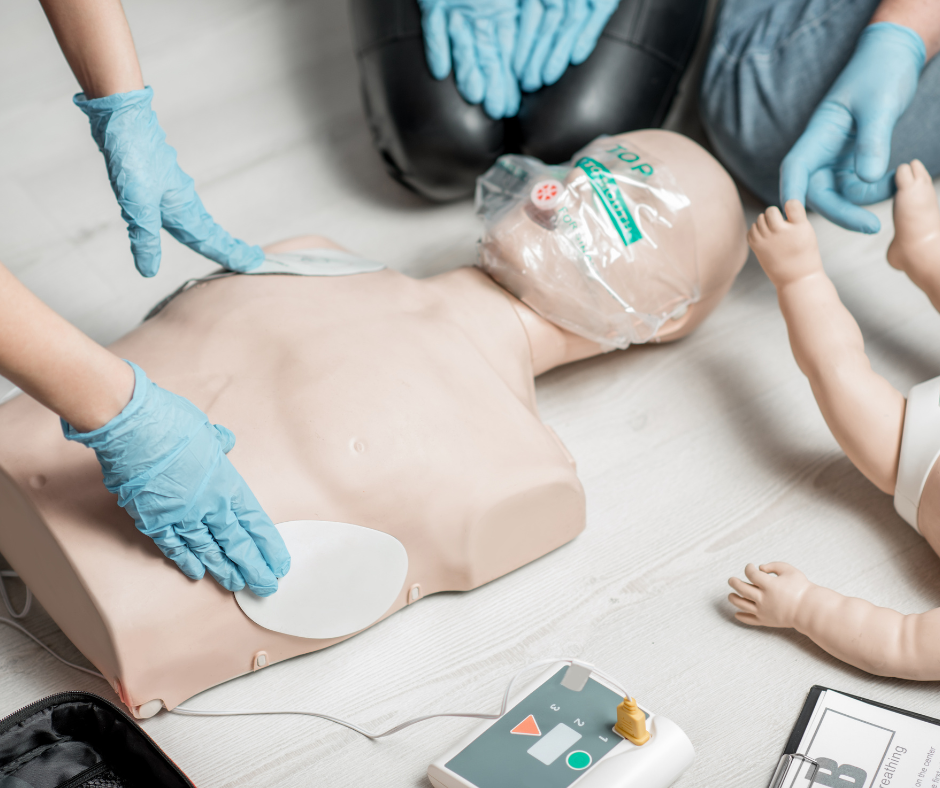This blog breaks down the changes made in the most recent update to first aid at work guidance. These updates do not change what is required to comply with the law.
Mental Health
 The updates to the guidance emphasise employers’ responsibilities to take account of employees’ mental health when conducting their first aid needs assessment.
The updates to the guidance emphasise employers’ responsibilities to take account of employees’ mental health when conducting their first aid needs assessment.
The guidance suggests that it may be beneficial to have, in addition to those with competence in either first aid at work or emergency first aid at work, members of staff trained to identify and understand symptoms of mental ill health.
This is in order to help support someone who is experiencing a mental health issue – it may be the case that your current first aiders are capable of providing initial support and reassurance, and if so they:
- Should know where and how to access professional help if needed
- Should be able to act promptly, safely and effectively until professional help is available
If not, further training should be considered.
The amount of first-aid provision an employer should make depends on both the physical and mental health risks in the workplace. Employers must determine the level of risk themselves, or delegate this to an occupational health service, as there is no fixed level.
Factors to consider in a needs assessment
- The presence of workers on site who have particular mental health problems
- Records of mental ill health
- Nature of the workforce
Keeping Employees Informed
For first aid arrangements to be effective, it is important everyone in the workplace is aware of them, understands them, and accepts them.
In the case that you have decided to train staff to identify and understand mental ill health symptoms, the workforce should be informed of:
- Who is involved in the workplace’s first aid provision
- Which types of incidents they have training or competence for
An easy way to achieve this is to display first-aid notices. These should:
- Be clear and easily understood by all
- Cater for those with reading or language difficulties
- Present in a prominent position at each site, including the bases of employees that travel
‘Life-Threatening Bleeding’
 A terminology change has been made from ‘catastrophic bleeding’ to ‘life-threatening bleeding’, and guidance on what employers should do if they identify this as a risk in their workplace has been expanded.
A terminology change has been made from ‘catastrophic bleeding’ to ‘life-threatening bleeding’, and guidance on what employers should do if they identify this as a risk in their workplace has been expanded.
If risk is identified
If life-threatening events, such as life-threatening bleeding, have occurred in your workplace, you should ensure that the first aid provision in place is able to cater to these types of injuries.
In organisations that supply a service to others, such as schools and shops, it is strongly recommended that first aid provision includes non-employees.
When selecting a training provider, employers should ensure that training delivered appropriately covers risks identified – if the needs assessment has identified that first aiders may encounter life-threatening bleeding, this should be included this on a first aid at work course.
First Aid Training Providers
 Training material and first aid course content should be in accordance with:
Training material and first aid course content should be in accordance with:
- Current guidelines published by the Resuscitation Council (UK); and
- The current edition of the first-aid manual of the Voluntary Aid Societies (St John Ambulance, British Red Cross, St Andrew’s First Aid); or
- Other published guidelines, provided they are in line with the two above or
- Supported by a responsible body of medical opinion
If blended learning is being considered for training delivery, you should ensure that:
- Trainees understand how to use the technology via which the training is delivered
- There are adequate means available for the training provider to support trainees
- The training provider has sufficient procedures in place to prevent identity fraud
- Classroom-based learning is given a sufficient amount of time to cover the practical elements of the syllabus
- The training provider has access to the e-learning component of the training.
If your needs assessment identifies qualifications other than First Aid At Work or Emergency First Aid At Work, you must ensure that common elements of the syllabus follow the same guidelines. For training delivered in-house, content should reflect FAW or EFAW qualifications and be delivered in accordance with currently accepted standards for first aid.
In-house trainers should hold the relevant skills, qualifications and competencies, the same as those expected of an external training provider. The competence of these trainers should be annually reviewed by a competent person independent of those directly involved in the delivery/assessment of this training.
If training records are kept, these should be retained for a minimum of three years following the completion of the assessment process.
While there is no obligation for a record to be kept of the checks carried out when choosing a training provider, you may find it beneficial to do so. These checks can be used to demonstrate the selection proves to an HSE or local authority inspector if needed.
Further guidance can be found in Selecting a first aid training provider: A guide for employers (GEIS3).
